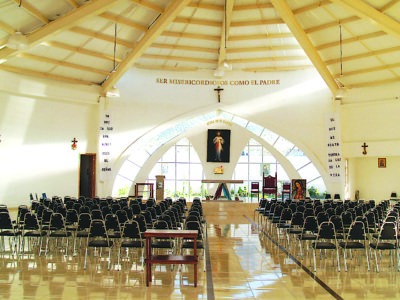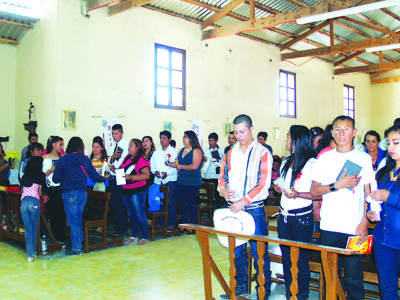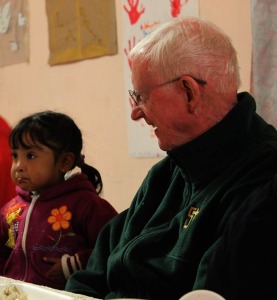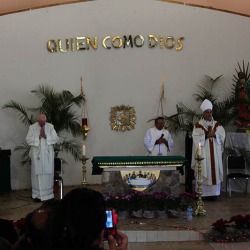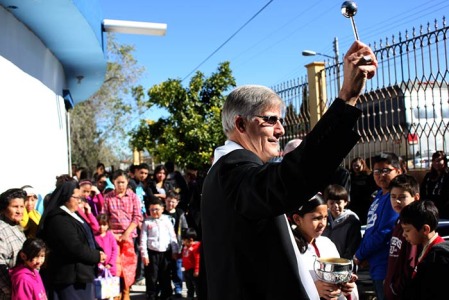Por Msgr. Michael Flannery
SALTILLO, Mex. – El jueves 12 de abril, el Obispo Kopacz y yo comenzamos nuestra visita anual a la misión en Saltillo, México. Los padres David Martínez y Evelio Casarubias, los sacerdotes de la misión, se reunieron con nosotros en el aeropuerto para llevarnos a la unidad de 70 millas a Saltillo a tiempo para la misa de las 6 p.m. en la Iglesia de la Divina Misericordia, dedicada por el Obispo Kopacz hace dos años. Después de la misa, se sirvió una comida deliciosa en honor a la llegada del obispo Kopacz.
La mañana siguiente (viernes), estábamos en la carretera a las 7 a.m. para visitar los ranchos acompañados de cinco acólitos y tres músicos. Nuestra primera parada fue en el pueblo de San Francisco para celebrar el sacramento de la Confirmación. Es rara vez que los pueblos ven un obispo. Por lo general, un aldeano tiene que viajar a la iglesia catedral para su confirmación, trayendo a familiares y patrocinadores con él/ella y tal vez pasar la noche. Por lo tanto, la visita del obispo es un gran ahorro para las familias. Después de la confirmación, todos compartimos un gran desayuno con los aldeanos y las personas recién confirmadas.
En el transcurso de ese día, dejamos el estado de Coahuila en el estado de Zacatecas, visitando los pueblos de Jalapa, Anima, Sabanilla, Garambullo y Tapon. Tapon es el pueblo más remoto y toma seis horas de viaje para llegar allí. La mayor parte del camino sigue un sendero hinchable, viajando aproximadamente de cinco a siete millas por hora. Nuestra última parada del día fue el Rancho el Cuervo, un famoso campamento de caza donde el amable anfitrión había preparado una deliciosa comida. En total, fue un día completo para el Obispo Kopacz, habiendo celebrado tres ceremonias de Confirmaciones, cuatro celebraciones de la Palabra y la Sagrada Comunión y una bendición de los aldeanos.
El sábado, el obispo don Raúl Vera, obispo de Saltillo, se unió al obispo Kopacz para bendecir la piedra angular de una nueva iglesia, San José. La bendición se llevó a cabo al aire libre bajo una sombra improvisada. La emoción de los 200 aldeanos fue increíble. Ellos participaron en la Misa con gran reverencia y entusiasmo. La realidad de tener su propio espacio de culto estaba a la vista. El obispo Vera predicó la homilía. Él habló de cooperar con los obispos de Texas y los obispos mexicanos cuyas diócesis estaban adyacentes a la frontera con los Estados Unidos. Este grupo recién formado de obispos estaba en el proceso de redactar una carta al presidente Trump en la que le suplicaba que no construyera un muro entre los Estados Unidos y México. El Obispo Kopacz, parafraseando al Papa Francisco, habló de construir puentes como el puente que las diócesis de Biloxi y Jackson han tenido con la Diócesis de Saltillo durante 49 años.
Después de la misa, viajamos a Presa San Pedro para la celebración de la Confirmación para los aldeanos de La Rosa, La Purísima y La Ventura. De nuevo, fue un gran festival de fe. Antes de irse, el Obispo Kopacz hizo una visita a una señora que sufría de parálisis cerebral. Ahora tenía 24 años y no pesaba más de 45 libras. Ella nunca había hablado y solo hacía sonidos guturales. La familia estaba muy agradecida por la visita del obispo.
El domingo por la mañana, en Saltillo, tuvimos una misa a las 9:00 a.m. en la Iglesia de la Divina Misericordia, que incluyó varios bautismos y un desayuno con las personas mayores. Después de la comida, nos unimos a una procesión a cuatro cuadras de la iglesia liderada por bailarines aztecas, que se dirigían a la Misa más grande del día a la 1:00 p.m. Una vez más, el obispo Kopacz fue el celebrante principal, acompañado por el obispo Vera. Las celebraciones continuaron hasta las 11:00 p.m.
Obispo Kopacz también visitó al sepulcro del padre Patrick Quinn, el fundador de la misión y el seminario local en Saltillo.
El martes viajamos a Aguascalientes para la ordenación diaconal de Adolfo Suárez Pasillas. Después del ensayo, conocimos a su familia encantadora y compartimos una comida deliciosa. El miércoles por la mañana Adolfo nos mostró los sitios históricos de Aguascalientes. La ciudad estaba haciendo preparativos extensos para la Feria de San Marcos, un festival anual de tres semanas que asisten varios millones de personas de todo México. Este festival musical tuvo una tradición ininterrumpida de 190 años. Los locales alegan que se consumirá más cerveza durante este período de tres semanas de la feria que durante el resto del año calendario.
Lo más destacado de nuestra visita fue la ordenación de Adolfo en su ciudad natal, Jesús María, en la iglesia parroquial de Jesús de Nazaret a las 5:30 p.m. Miércoles, 18 de abril. El Obispo Kopacz presidió la misa con una iglesia abarrotada de aproximadamente 500 personas, otras 400 se habían congregado en el patio. El apoyo de los feligreses fue increíble. El Vicario General de la Diócesis de Aguascalientes saludó al Obispo Kopacz y lo recibió en la diócesis. Señaló que la parroquia de Jesús de Nazaret era la parroquia más espiritual de toda la diócesis. La Diócesis de Aguascalientes ordena un promedio de 12 sacerdotes por año y actualmente tiene suficiente excedente que algunos de sus sacerdotes están sirviendo en otras áreas de México. De hecho, el vicario mencionó que podrían compartir algunos sacerdotes con la Diócesis de Jackson.
El padre Kent Bowlds, pastor de la parroquia de Nuestra Señora de las Victorias en Cleveland, donde Adolfo ha servido, dio el testimonio de la buena disposición del candidato. Después de la ordenación, nos dirigimos a un salón cercano donde fuimos recibidos por una banda de Mariachi y la celebración continuó hasta las 11:00 p.m.
En total, fue una semana llena, una tremenda experiencia de compartir la fe y una gran bendición para todos los participantes. En nuestro viaje de regreso a casa, el obispo Kopacz ya estaba haciendo planes para su viaje de regreso para el próximo año, cuando con suerte bendecirá la iglesia recién construida de San José y participará en el jubileo de oro de la fundación de la Misión Saltillo. El buen trabajo iniciado por el Padre Patrick Quinn, el fundador de la Misión Saltillo todavía continúa en su alcance a los pobres.
El diácono Adolfo será asignado a la parroquia de Jackson Santa Tersita durante su año como diácono.
(Mons. Michael Flannery es un sacerdote retirado de la Diócesis de Jackson. Ha escrito un libro sobre la misión de Saltillo, disponible en la Parroquia Madison St. Francis.)
(Nota del editor: una cobertura más amplia de la ordenación del Diácono Adolfo aparecerá en el conjunto especial de ordenación en el Mississippi Catholic en junio.)

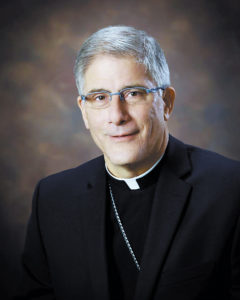

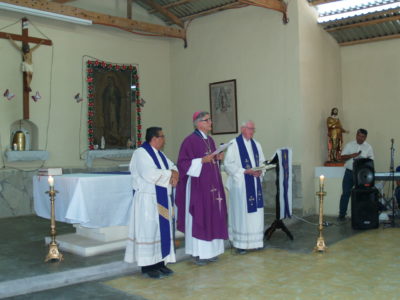
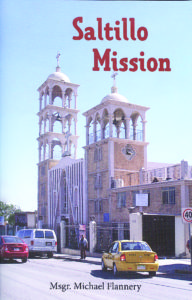
 Obispo Joseph Kopacz y yo hicimos a la Misión de Saltillo, México el 30 de marzo al 3 de abril. Podemos informar que el buen trabajo iniciado por el padre Patrick Quinn en 1969 está floreciendo. Los dos sacerdotes mexicanos que sirven en la misión, padres Davíd y Elevio, tienen espíritus misioneros profundos y están siguiendo los pasos del Padre Quinn.
Obispo Joseph Kopacz y yo hicimos a la Misión de Saltillo, México el 30 de marzo al 3 de abril. Podemos informar que el buen trabajo iniciado por el padre Patrick Quinn en 1969 está floreciendo. Los dos sacerdotes mexicanos que sirven en la misión, padres Davíd y Elevio, tienen espíritus misioneros profundos y están siguiendo los pasos del Padre Quinn.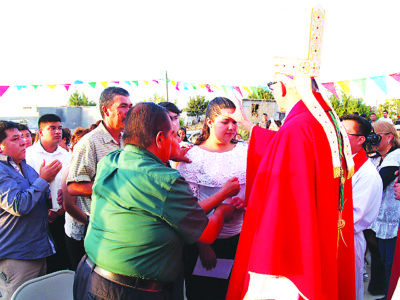 a primera visita fue a la iglesia de Cristo Rey, una de las iglesias en la ciudad servida por San Miguel. Visitamos los otros, Los Santos Mártires y San Guillermo, al día siguiente.
a primera visita fue a la iglesia de Cristo Rey, una de las iglesias en la ciudad servida por San Miguel. Visitamos los otros, Los Santos Mártires y San Guillermo, al día siguiente.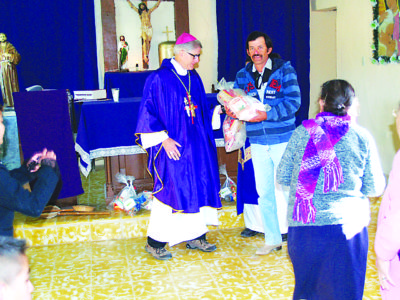 al obispo un
al obispo un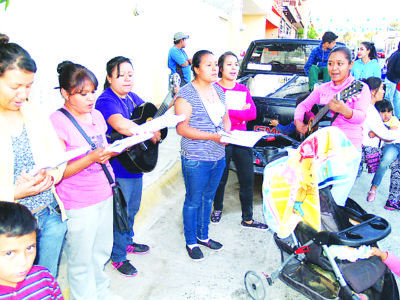 Confirmación. Después, tuvimos un almuerzo delicioso con los aldeanos. El padre Davíd nos mostró un edificio que consta de dos habitaciones donde los catequistas se quendan para que puedan formar catequistas de la aldea y realizar misiones durante todo el año. Él planea agregar otro piso al edificio, ya que La Ventura es una ubicación central desde donde se sirven otras seis aldeas.
Confirmación. Después, tuvimos un almuerzo delicioso con los aldeanos. El padre Davíd nos mostró un edificio que consta de dos habitaciones donde los catequistas se quendan para que puedan formar catequistas de la aldea y realizar misiones durante todo el año. Él planea agregar otro piso al edificio, ya que La Ventura es una ubicación central desde donde se sirven otras seis aldeas.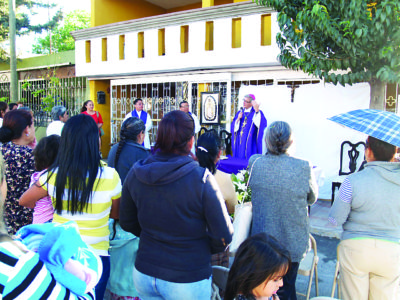 en la universidad. A cambio de alojamiento y comida, los estudiantes acompañan a los sacerdotes durante sus ministerios los fines de semanas, un proyecto que cuesta aproximadamente $2,500 por estudiante. Sin embargo, este es un excelente ejemplo de la iglesia ofreciendo sus servicios a los necesitados y cambiando las vidas de la gente para mejor.
en la universidad. A cambio de alojamiento y comida, los estudiantes acompañan a los sacerdotes durante sus ministerios los fines de semanas, un proyecto que cuesta aproximadamente $2,500 por estudiante. Sin embargo, este es un excelente ejemplo de la iglesia ofreciendo sus servicios a los necesitados y cambiando las vidas de la gente para mejor.